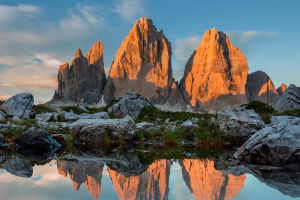Mount Fuji, Japan's tallest peak at 3,776 meters, holds a special place in the nation's heart.
For centuries, it has been more than just a beautiful backdrop; it's a symbol of artistic inspiration, a spiritual beacon, and a cultural treasure.
Its perfect symmetry and majestic presence have inspired countless poets, painters, and pilgrims, shaping Japanese art and identity for generations.
A Symbol of Deep Cultural Value
Mount Fuji has been considered a symbol of spiritual connection for centuries, embodying the relationship between nature and the human spirit. Many see it as a mystical place where legends and folklore come to life, with its peak often representing longevity and strength. During the Edo period (1603-1868), communities believed that ascending Fuji's slopes could bring about inner peace and personal growth, making it a respected landmark for self-discovery.
Even today, while many climb it as a recreational activity, standing atop its peak carries a sense of reflection and harmony, turning Fuji into more than just a natural wonder—it's a testament to Japan's cultural depth and human resilience.
Top 5 Things to do Around Fuji | japan-guide.com
Video by japan-guide.com
Fuji in Japanese Art and Culture
One of the most significant contributions Mount Fuji has made to Japanese culture is through its depiction in art. It's been a focal point in various mediums, most notably in ukiyo-e woodblock prints. The famed "Thirty-Six Views of Mount Fuji" by Katsushika Hokusai showcases the mountain from different angles, seasons, and times of day. Each image emphasizes Fuji's towering beauty and connection to daily Japanese life.
Hokusai's masterpiece, created in the early 19th century, captures more than just a mountain; it illustrates the Japanese respect for nature, change, and impermanence—core concepts of Japanese aesthetics. The iconic "The Great Wave off Kanagawa," one of the most famous pieces from the series, depicts a colossal wave dwarfing Mount Fuji in the background, symbolizing the struggle between nature's power and human fragility.
In addition to Hokusai, Utagawa Hiroshige also celebrated Mount Fuji in his works, portraying it as a serene presence amidst bustling landscapes. These images not only solidified Fuji's place in the artistic world but also helped shape Western perceptions of Japan, making the mountain an emblem of the nation itself.
A Symbol of National Identity
Beyond its artistic and spiritual significance, Mount Fuji is deeply intertwined with Japan's sense of identity. During the Meiji Restoration (1868-1912), when Japan opened up to Western influence, Mount Fuji stood as a symbol of Japanese heritage and strength. Its silhouette became synonymous with the essence of Japan, representing a timeless continuity amidst rapid change.
This symbolism persists today, with Fuji appearing on currency, stamps, and even Olympic logos. It's more than just a peak; it's an icon that encapsulates the spirit of Japan—a land where tradition and modernity harmoniously coexist.
Fuji's Legacy in Modern Times
In the 21st century, Mount Fuji continues to inspire. In 2013, it was designated a UNESCO World Heritage site, highlighting its cultural and artistic value. Every year, over 300,000 people climb its slopes, a mix of seasoned hikers and curious tourists. Despite its popularity, the mountain retains an aura of mystery and reverence.
Modern artists, photographers, and filmmakers still turn to Mount Fuji for inspiration, capturing its beauty and significance in contemporary forms. It remains a muse that connects Japan's past, present, and future.
Mount Fuji is more than just a mountain; it's a symbol that transcends time, embodying Japan's spirit, art, and history. From ancient mythology to contemporary art, Fuji's presence is woven into the fabric of Japanese culture, serving as a constant reminder of the country's rich heritage.


